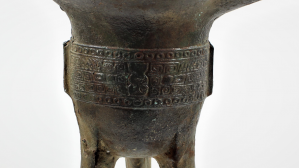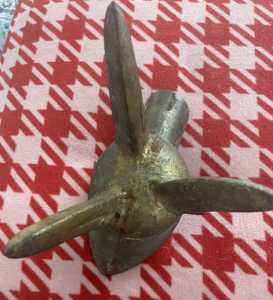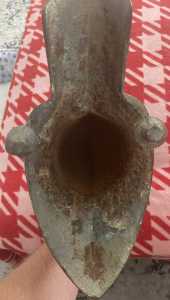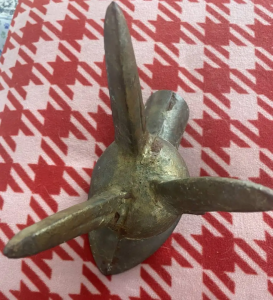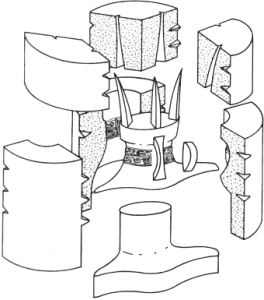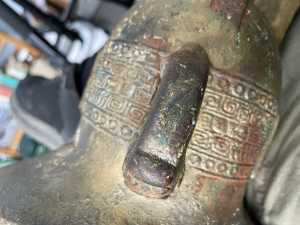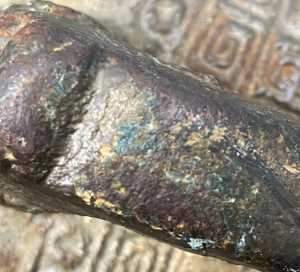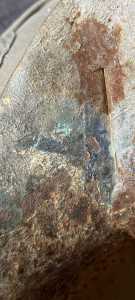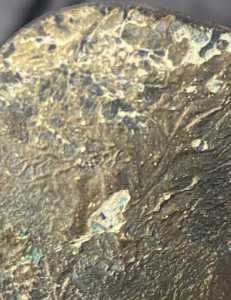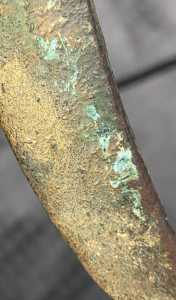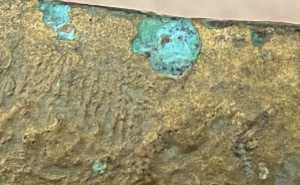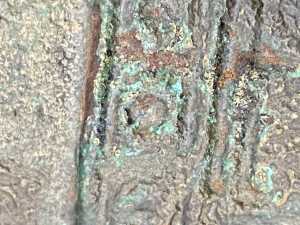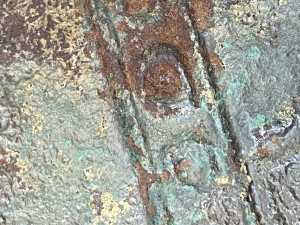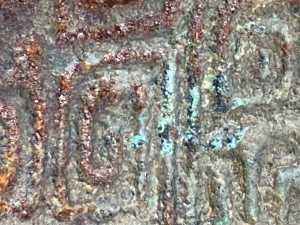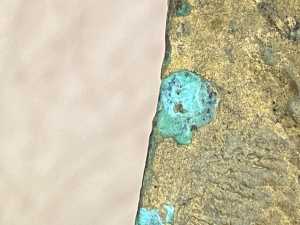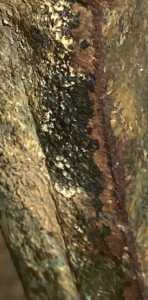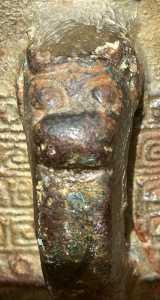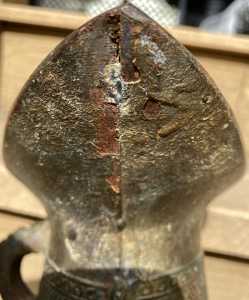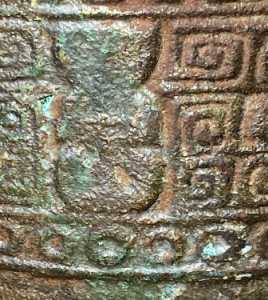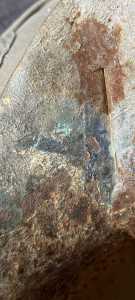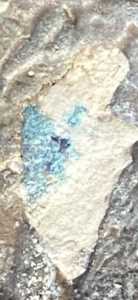The Chinese and Asian Art Forum. For Fans, Collectors and Dealers.
 Basic Rules For the BidAmount Asian Art Forum: Talk about whatever you want. You can even discuss and offer things that are for sale if they are authentic. Maximum image file size per post is 2 MB. Images of 700pxl x 700pxl are optimal if saved at a medium resolution. Be respectful of others and enjoy yourself. Click the YouTube link for a brief tutorial on using the forum. You can also EMBED Videos by cutting and pasting from You-Tube, Vimeo etc.
Basic Rules For the BidAmount Asian Art Forum: Talk about whatever you want. You can even discuss and offer things that are for sale if they are authentic. Maximum image file size per post is 2 MB. Images of 700pxl x 700pxl are optimal if saved at a medium resolution. Be respectful of others and enjoy yourself. Click the YouTube link for a brief tutorial on using the forum. You can also EMBED Videos by cutting and pasting from You-Tube, Vimeo etc.
NOTE: To post an item or add a new post, click open the category title from the FORUM LIST, and CLICK the Blue ADD TOPIC button.
So I got this today digging. I've have to dig lately because the estate sales have been very competitive people waiting 5 hours for a 19th century bowl. During my dig in the dealers mall under a pile of stuff this was laying on the floor. $25 bucks. I thought it was a copy but after inspection I'm seeing authentic patina. I hear Peter mentioning the fakes in the market. It seems legit. I forgot to mention its a large bronze over 12 inches tall.
Nicely cast. The brown patina is concerning. Did you test with a magnet?
Regarding assessing age… the more metallic in feel /sound (if you flick it), the newer it is.
The more fossilized/mineralized in feel / sound, the older.
Can you post a close up of the vase where the legs join the body? And the interior?
@greeno107 I do believe this vessel to be iron casting. As the rust is present in the patina I also believe it was gilded at some point. My understanding is iron was not used in Bronze Age which would suggest a reproduction.
I am confused. Have you changed your mind about it being authentic or did you mean it was a legit piece but not as old as original pieces? So an authentic, old reproduction rather than a modern copy.
Even if you have changed your mind and think it is recent, it would be good to see the photos Tim asked for. I enjoy these threads as I know so little about old metalware.
Never had an interest in collecting bronzes, but two years ago I visited an exhibition at my local Asia Society of ancient bronzes from the collection of the Minneapolis Museum of Art. There must have been 30 examples of ancient Chinese bronzes and it was obvious I was looking at the ‘best of the best’. This was at the start of the pandemic and I was the only person there other than the guard.
What I observed was that without exception, every piece was finely cast with incredible detail. Even through the various patinas on their surface, the cast designs were absolutely stunning down to the smallest detail. Looking at the last photo of your example, the level of casting doesn’t even come close to what I saw at that exhibit.
@julia I do not believe it’s modern but there is some confusion on iron vs bronze. I have found iron Jue labeled with the same dating as bronze but none from a resource that I would call a credible source. It also could be a mixture of alloy. There is a 1200 year time span.
I got an opinion today on the Jue. It is believed to be Zhou period. The beginning of the Chinese Iron Age. The vessel was made in the Archaic fashion but is not part of the bronze era. The quality difference is due in fact because of the melting point and consistency of the alloy. Bronze has a lower melting point which allows higher temperatures to create fine edges and details iron melts at a very high temperature the smelters top temperature achieved was not hot enough to achieve the thinning of the liquid to achieve the finer details. There are two reasons why my vessel has green corrosion due to the cast of the iron alloy was rough and a bronze finish layer was added which has higher copper percentage than the core and the impurities of the iron ore. The way I was told to distinguish the ancient vessels from the later periods is the mixing of alloys as the minerals were separated and the percentage of iron copper,zinc and removal of impurities are more refined etc on a 19th or 20th century casting the iron percentage and alloy are so refined that the presence of copper in the alloy in very low and later smelting temperature were achieved at a much higher temperature. In ancient casting the refinement of alloys did not exist like the later period which iron cast objects will contain copper zinc and lead this give the vessel a different patina then later copies.
I don't think it's iron. Early bronze alloys also often contain an amount of iron I think so such vessels will probably attract a magnet. But the size seems a little suspect to me. Usually these vessels are smaller in size.
I might be mistaken, but from this picture, it looks like there's a seam separating the bronze into two halves:
As with most other three-legged bronze forms, the molds used to cast bronze jue were typically split into thirds and not halves. Here's an example:
If this were in my hands I'd spend some time looking at the patina with a 10-30X loupe. Fake patinas are usually much more uniform than natural mineralizations.
@craig I found this comparable the description is very interesting.
https://www.liveauctioneers.com/item/4068927_440-chinese-cast-iron-wine-vessel-jue-c1000-bc
So I wanted to add some closeups of the corrosion patina I have seen a lot of fake patina pieces I own one also. This is aged patina to me but I’m aware of the fakes and masters of fakes. You can judge for yourself.
@lotusblack I'm suspicious of this thing. Hopefully I'm wrong. Do you plan to ask Peter about it. If so keep us posted.
@johnshoe that the problem I find ugly about Asian Art everything is so faked today that everyone is suspicious about everything. I posted a piece I purchased straight from Christie’s and 8 of 10 said it’s a fake. As for Chinese bronze or castings no one on this site can really authenticate a piece by photos because I was told that fakes are so good today that only testing can validate a piece. For me it doesn’t matter if last week or 1000 years ago I’ll triple my $25 bucks either way. I’ll show my fake bronze helmet later for comparison.
I already sent it off to three people Peter is one of them. One already responded they show an owl that was case during the same time that was a close match. I’m still trying to figure out the finish coat the top layer that seals the joints no one really talks about that.
One important thing is these items were used for everyday life and burial the two factors decided how the patina was formed or how the pieces was constructed.
Thanks for visiting "The BidAmount Asian Art Forum | Chinese Art"
If you sell on eBay, or have a shop feel free to post images and descriptions and links.
Check back often for discussion about the latest news in the Chinese art and antique world. Also find out about the latest Asian art auctions at Sotheby's, Christie's, Bonhams and Tajans.
Auction results for: fine porcelain, ceramics, bronze, jade, textiles and scholar's objects. As well as Japanese, Thai, Vietnamese and other Asian cultures.
Thank you,
Peter Combs
Topics and categories on The BidAmount Asian Art Forum | Chinese Art
Kangxi vases, Kangxi dishes and chargers, Kangxi ritual pieces, Kangxi scholar's objects, Qianlong famille rose, Qianlong enamels, Qianlong period paintings, Qianlong Emporer's court, Fine porcelain of the Yongzheng period. Chinese imperial art, Ming porcelain including Jiajing, Wanli, Xuande, Chenghua as well as Ming jades and bronzes.
The BidAmount Asian Art Forum | Chinese Art
A free Asian art discussion board and Asian art message board for dealers and collectors of art and antiques from China, Japan, Korea, Thailand, Cambodia, Vietnam and the rest of Asia. Linked to all of the BidAmount Asian art reference areas, with videos from plcombs Asian Art and Bidamount on YouTube. Sign up also for the weekly BidAmount newsletter and catalogs of active eBay listing of Chinese porcelain, bronze, jades, robes, and paintings.
The art of calligraphy - and for the ancient Chinese it certainly was an art - aimed to demonstrate superior control and skill using brush and ink. Calligraphy established itself as one of the major Chinese art forms during the Han dynasty (206 BCE - 220 CE), and for two millennia after, all educated men were expected to be proficient at it.
The Museum’s collections of Asian art span nearly five millennia and encompass the cultures of China, the Himalayas, India, Japan, Korea, and Southeast Asia. In 2007, the Museum launched an initiative to create dedicated galleries for the collection, beginning with a gallery for the arts of Korea ...
Chinese art is full of symbolism, in that artists typically seek to depict some aspect of a totality of which they are intuitively aware.
China Online Museum is the finest online museum of Chinese art. It features Chinese calligraphy, painting, ceramics, bronzes, carving, and other artworks.
Chinese Ceramics & Works of Art. Overview Upcoming auctions Contacts Auction results ... Christie’s sales of Chinese ceramics and works of art showcase centuries of Chinese history. Held throughout the year in London, New York, Paris and Hong Kong, they attract a wide audience of collectors and connoisseurs vying for pieces as diverse as ...
Explore Asian Art Week. Contact the Specialist Department. Chinese Paintings ... Senior Specialist, Head of Sale. [email protected]. Tel:+1 212 641 5760. Bid in-person or online for the upcoming auction:Fine Chinese Paintings on 10 September 2019 at New York. Bid in-person or online for the upcoming auction:Fine Chinese Paintings on 10 ...
Discover an abundance of must-see art from all corners of a vast continent at Christie’s NY Asian Art Week. From contemporary classical and Chinese paintings to works with exemplary provenance from the Art Institute of Chicago, our Rockefeller Paza galleries will be full of ancient treasures and contemporary masterworks in a salute to the vibrant arts of Asia.
Sold to benefit The Art Institute of Chicago’s Asian Art Acquisition Fund, the sale features 84 lots with a focus on Ming and Qing porcelains, and offers a rare insight into the taste for collecting Chinese ceramics and works of art in the Midwest from the end of the 19th century through the 1980s. Highlights include two Wanli wucai garlic-head vases, a Qianlong mark and period, blue and ...
Specialist, Chinese Paintings, Christie's London Dr Malcolm McNeill is a Specialist in Chinese Paintings at Christie’s, based in London. He previously worked as an assistant curator of the Chinese collections and the Victoria and Albert Museum in London, as a researcher at the British Museum, and as a translator and tour guide at the National Palace Museum in Taipei.
The Christie's Education 2020 Conference: The Chinese Art Market 18 Jun 2019 Christie’s Education is delighted to announce our first international academic conference in Asia which will take place in Hong Kong from 26-27 November 2020 at the Hong Kong Convention and Exhibition Centre and will run in parallel with Christie’s Hong Kong Autumn Auctions.
The summer Chinese Art sale in Hong Kong will feature works of art from several private collections, including Qing porcelains and textile from the collection of the legendary Chinese art dealer A. W. Bahr (1877–1959), fine gilt bronze Buddhist sculptures from an old Hong Kong collection, an East Asian collection of Qing dynasty wine cups and jades, and a Japanese collection of Song ceramics ...
Sotheby's Chinese Works of Art Department holds two auctions each year in London, New York, Hong Kong and Paris.
Chinese Art - View Auction details, bid, buy and collect the various artworks at Sothebys Art Auction House.
With more than 340 Chinese works of art dating from the Neolithic to the Republic periods, highlights of this sale include a selection of Qing Imperial monochromes from the collection of Arnold and Blema Steinberg, early ceramics from the Art Institute of Chicago and Chinese porcelain and works of art from the collection of Henry Arnhold.
Results: Sotheby's Asia Week achieved $52.4 million in six strong auctions, exceeding pre-sale estimates. With 76.5% of lots sold and 60.3% of lots surpassing high estimates, the Asian art sales at Sotheby's indicate continued collector interest in the finest works of art from China, India and and the Himalayas.
Today's sale of Important Chinese Art will proceed as planned with sessions at 10 AM and 2 PM EDT. Sotheby's will be monitoring the weather conditions throughout the day and will be available to coordinate alternative bidding options should conditions make it difficult for clients to attend the auction in person.
Bonhams Chinese Art department is renowned for offering the finest works of art representing the richness and breadth of China's artistic heritage, particularly Imperial porcelain, white and spinach green jades, cloisonné and Buddhist art. Specialised international auctions are held globally, including London, Hong Kong and San Francisco.
Bonhams : Chinese Works of Art We use cookies to remember choices you make on functionality and personal features to enhance your experience to our site. By continuing to use our site you consent to the use of cookies. Please refer to our privacy and cookie policies for more information.
Bonhams Fine Art Auctioneers & Valuers: auctioneers of art, pictures, collectables and motor cars. We use cookies to remember choices you make on functionality and personal features to enhance your experience to our site. By continuing to use our site you consent to the use of cookies. ... Chinese Art (US) General enquiries
Bonhams : Fine Chinese Art We use cookies to remember choices you make on functionality and personal features to enhance your experience to our site. By continuing to use our site you consent to the use of cookies. Please refer to our privacy and cookie policies for more information.
Bonhams Fine Art Auctioneers & Valuers: auctioneers of art, pictures, collectables and motor cars Bonhams : Asian Art We use cookies to remember choices you make on functionality and personal features to enhance your experience to our site.
Bonhams are international auctioneers of fine Chinese and Japanese art. We specialise in rare Imperial and Export Chinese ceramics and works of art, as well as Japanese ceramics, fine and decorative works of art from the Neolithic Period to the 20th century. View on map
Bonhams Fine Art Auctioneers & Valuers: auctioneers of art, pictures, collectables and motor cars. We use cookies to remember choices you make on functionality and personal features to enhance your experience to our site. By continuing to use our site you consent to the use of cookies. ... Asian Art Bonhams. Work. 22 Queen St.
